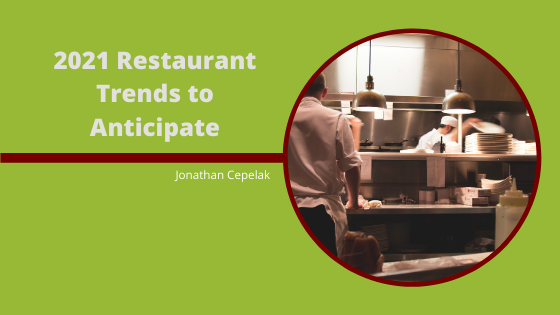There’s no question the restaurant industry took a massive hit in 2020, with approximately 17% of restaurants closing nationwide due to the COVID-19 pandemic, and it’s not over yet. 2021 isn’t starting much better with widespread restrictions on indoor dining and wary consumers still limiting restaurant operations. As a result, primary industry trends continue to be based on digital technology, reflecting consumer demand for mobile-enabled engagement and contactless delivery. Here are some of the top restaurant industry trends analysts expect to see in 2021.
Curbside Pickup vs. Delivery
For restaurants without drive-thrus, curbside pickup is a relatively low-cost option that benefits both the restaurant and consumers. While delivery services charge additional fees, curbside provides convenience and safety at no additional cost. For consumers, it can have the additional benefit of being faster than ordering delivery if the restaurant is close to home.
Alongside this trend, analysts are seeing a huge investment in mobile apps and technology for reservations, menus, payment, and tipping. Restaurants are looking to enhance the customer experience using the technology. Since curbside is such a quick transaction, the customer’s experience with the app will be the only impression they have of the business.
Chain restaurants have an advantage over mom and pop restaurants because many of them had begun to adopt the use of mobile apps and curbside pickup even before the pandemic, and they have significantly deeper pockets for investing in technology. Independent restaurants are likely to still have customers calling in when they arrive to pick up their purchases.
Rising Labor Costs Despite High Unemployment
The labor pool and rising minimum wage expenses are expected to be a challenge for restaurants this year. Florida recently raised minimum wage requirements, and many in the industry are watching to see how restaurant owners there manage the increased expense. Meanwhile, restaurants are finding their typical labor pool of college and high school students drying up. With good employees harder to come by, restaurants face purchasing more personal protective equipment and paying increased wages and health insurance to retain employees.
Delivery Services Sticking Around, but Increases in White Label Deals
Due to the continued restrictions and consumer demand for contactless delivery, third-party partnerships for delivery are here to stay. Restaurants partnering with these services are likely to continue using free delivery promotions to market, particularly since sales are often higher even beyond the promotional period due to increased consumer awareness.
Restaurants that have traditionally operated their own delivery services have seen increasing costs. For many, it makes sense to outsource that part of the business; however, they still want to retain control over the brand experience and consumer data. Rather than forfeit that customer data to a third-party delivery service, restaurants will increasingly enter into white label partnerships where delivery is outsourced, but customers order through the restaurant’s website. Allowing them to retain data that can help them market more effectively.

